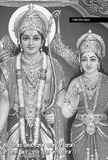Mostrar el registro sencillo del ítem
A History of Zhang Zhung and Tibet: An Overview and some Reflections about Chögyal Namkhai Norbu’s Trilogy
| dc.rights.license | http://creativecommons.org/licenses/by-nc-sa/3.0/ve/ | |
| dc.contributor.author | Rossi, Donatella | |
| dc.date.accessioned | 2015-01-12T14:02:32Z | |
| dc.date.available | 2015-01-12T14:02:32Z | |
| dc.date.issued | 2014-12 | |
| dc.identifier.issn | 1856-6812 | |
| dc.identifier.uri | http://www.saber.ula.ve/handle/123456789/39543 | |
| dc.description.abstract | Chögyal Namkhai Norbu proposes a new outlook on the nature of the Tibetan cultural identity, which for centuries has been conditioned by the perspective of the Buddhist orthodoxy. Such view has undermined the opinion that Tibetans nurtured about themselves concerning their written language and the overall value of their civilization, especially the Bon tradition. In his Trilogy Chögyal Namkhai Norbu takes us along a path that starts from the origin of the Zhang Zhung kingdom and ends with the central Tibetan monarchy and the advent of the Buddhadharma in Tibet, showing the profound and diversified dimensions of this endangered civilization. | es_VE |
| dc.language.iso | en | es_VE |
| dc.rights | info:eu-repo/semantics/openAccess | |
| dc.subject | Chögyal Namkhai Norbu | es_VE |
| dc.subject | Zhang Zhung | es_VE |
| dc.subject | Bon | es_VE |
| dc.subject | Shenrab Miwoche | es_VE |
| dc.subject | Historia del Tíbet, | es_VE |
| dc.subject | The Light of Kailash | es_VE |
| dc.title | A History of Zhang Zhung and Tibet: An Overview and some Reflections about Chögyal Namkhai Norbu’s Trilogy | es_VE |
| dc.title.alternative | La luz del Kailash. Una historia del Zhang Zhung y el Tíbet: Una visión de conjunto y algunas reflexiones sobre la trilogía por Chögyal Namkhai Norbu | es_VE |
| dc.type | info:eu-repo/semantics/article | |
| dc.description.abstract1 | Chögyal Namkhai Norbu propone un nuevo enfoque sobre la naturaleza de la identidad cultural tibetana, que por siglos ha estado condicionada por la perspectiva de la ortodoxia budista, la cual ha socavado la opinión de los tibetanos sobre su escritura y lengua y el valor global de su civilización, y en particular sobre la tradición Bon. En su trilogía Chögyal Namkhai Norbu nos conduce desde los orígenes del reino del Zhang Zhung hasta la monarquía del Tíbet central y la llegada del dharma de Buda al Tíbet, mostrando las profundas y diversifi cadas dimensiones de dicha civilización —actualmente en peligro. | es_VE |
| dc.description.colacion | 99-112 | es_VE |
| dc.description.email | donatella.rossi@uniroma1.it | es_VE |
| dc.description.frecuencia | Semestral | |
| dc.identifier.depositolegal | 200602ME2418 | |
| dc.publisher.pais | Venezuela | es_VE |
| dc.subject.centroinvestigacion | Centro de Estudios de África, Asia y Diásporas Latinoamericanas y Caribeñas José Manuel Briceño Monzillo (CEAA) | |
| dc.subject.facultad | Facultad de Humanidades y Educación | es_VE |
| dc.subject.institucion | Universidad de Los Andes | es_VE |
| dc.subject.keywords | History of Tibet | es_VE |
| dc.subject.publicacionelectronica | Revista Humania del Sur | |
| dc.subject.seccion | Revista Humania del Sur: Caleidoscopio | es_VE |
| dc.subject.thematiccategory | Artes y Humanidades | es_VE |
| dc.subject.tipo | Revistas | es_VE |
| dc.type.media | Texto | es_VE |
Ficheros en el ítem
Este ítem aparece en la(s) siguiente(s) colección(ones)
-
Humania del Sur - Año 009, No. 017
Julio - Diciembre 2014


